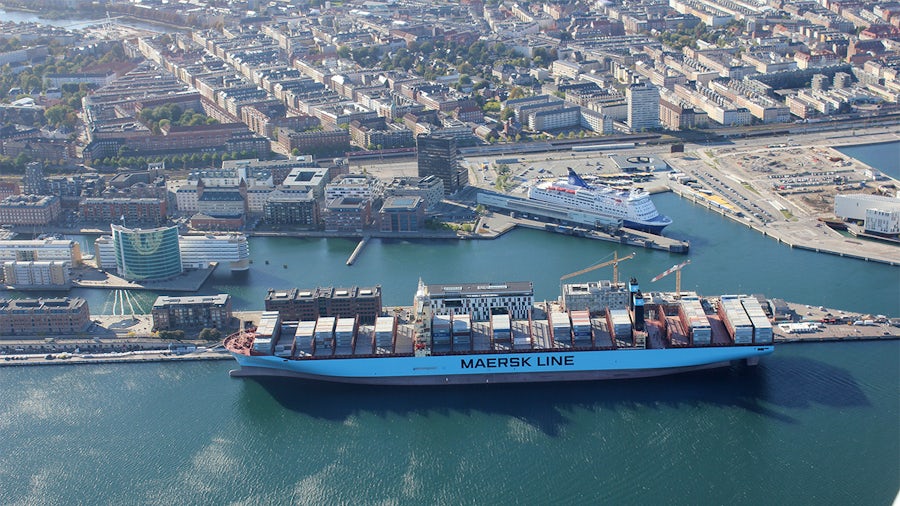Leading marine engine manufacturer speeds fuel injection system development by a factor of five
Ability to simulate both gas and liquid fuel injection using Simcenter Amesim also significantly reduces testing costs

MAN Energy Solutions
MAN Energy Solutions is a leading producer of large diesel engines for ships and power stations, and is one of the three leading suppliers of turbo machines. The company employs approximately 15,000 specialists at more than 100 international sites.
- Matriz:
- Copenhagen, Denmark
- Produtos:
- Simcenter 3D Solutions, Simcenter Amesim
- Setor industrial:
- Marine
Using Simcenter Amesim, development time has been reduced by a factor of five.
Shipping’s economic and environmental challenges
In recent years, following a global slowdown in international trade, the volume of goods transported by merchant ships has decreased. To remain competitive, maritime logistics companies are limiting ship speed to minimize fuel consumption, which represents 90 percent of the sailing costs for a ship owner and may reach 200 tons per 24 hours for the largest vessels.
To support the slower speeds, and also to meet stringent emission regulations (such as the Tier III nitrogen oxide emissions standard scheduled for 2016), the shipbuilding industry has started investigating the use of alternative fuels for two-stroke engines. Liquefied natural gas (LNG), methanol, ethanol or liquefied petroleum gas (LPG) may provide a sustainable alternative to heavy fuel oil (HFO), but due to their specific properties such as vapor pressure, temperature, flash point and corrosion, they require different fuel injection systems.
MAN Energy Solutions, part of the Power Engineering Business Area of MAN SE, specializes in the development of two-stroke engines for marine applications. Its lowspeed product line includes a wide range of marine diesel, biofuel, heavy fuel oil and dual-fuel gas engines, with piston diameters from 26 to 98 centimeters (10 to 39 inches).

Two-stroke diesel engines are very tall, which enables high-torque performance without any gearbox. Connecting the engine directly to the propeller shaft allows design specialists to achieve 50 percent mechanical efficiency.
Engine testing is prohibitively expensive
With fuel-oil-only, mixed-gas and minimum-oil operating modes, dual-fuel engines offer ship owners great flexibility. Modifying an engine’s fuel system to operate on gas rather than HFO requires changing the injection valves, using double-wall pipes in the gas supply line to prevent the escape of gas, and adding a ventilation system in the space between the outer and inner pipe walls to ensure that any leak is immediately detected by sensors.
Developing new fuel systems using an approach exclusively based on testing is cost-prohibitive. “The fuel required for one hour of engine testing costs us approximately $10,000, and some tests last several days,” says Mikkel Thamsborg, research and development (R&D) project manager in the R&D Injection and Hydraulics Department at MAN Energy Solutions.
To minimize the need for physical testing, the company uses a model-based systems engineering (MBSE) approach in the design of new fuel injection systems. Previously, this involved an in-house Fortran-based program that was tailored to the design of traditional HFO engines.
During the development of the new gasbased fuel systems, MAN Energy Solutions replaced the Fortran program with Simcenter Amesim™ software from product lifecycle management (PLM) specialist Siemens Digital Industries Software. Simcenter Amesim was chosen for its ability to simulate the behavior of both gas and liquid fuel injection systems. MAN Energy Solutions also uses Simcenter Amesim Fuel Injection and Valvetrain and Simcenter Amesim Pneumatics solutions.

Gas injection system.
Accelerating the development process
Using standard Simcenter Amesim features such as supercomponents and submodels, MAN Energy Solutions engineers create libraries of the company’s fuel injector models, including different configurations for each model. Each injector model is then scaled to fit different applications. The software allows for the modeling of any kind of injector technology and the company has created injector models that represent many different technologies.
“When developing a gas injection engine, we have to make a lot of changes,” says Mads Weise Ravn, a research engineer in charge of the design of new types of engines at MAN Energy Solutions. “Simcenter Amesim allows us to implement modifications much faster by using its off-the-shelf components and easily changing their parameters. This allows us to significantly reduce modeling time when designing new injection systems compared to our in-house program.”
During the development of the dual-fuel engine, design engineers used Simcenter Amesim to determine the size of the shared accumulator (part of the hydraulic actuation system) for the gas and HFO systems, and to determine whether any hydraulic impulses would internally influence the two systems. The software was also used to optimize gas injectors’ opening and closing time, which has a major influence on combustion performance and fuel efficiency.

Huge time savings for environmentally friendly engines
“Using Simcenter Amesim, development time has been reduced by a factor of five,” says Thamsborg. Another benefit of Simcenter Amesim is that it easier to use for new engineers. “To work with our in-house code, it is necessary to be an expert in hydraulics mathematics and programming. Using Simcenter Amesim the training process for new colleagues is much simpler,” Thamsborg adds.
The dual-fuel engines design by MAN Energy Solutions using Simcenter Amesim produce significantly lower emissions, enabling the company to maintain its position at the forefront of innovation. Compared to traditional HFO operation, these engines reduce carbon dioxide, nitrogen oxide and particulate matter emissions by more than 20 percent and sulfur oxides by more than 90 percent.
“MAN Energy Solutions has a long history of close collaboration with Siemens Digital Industries Software,” says Ravn. “We are very satisfied with the performance of Simcenter Amesim. The next step could become the implementation of Simcenter™ Sysdm software to optimize management of our models we have built with Simcenter Amesim.”
To work with our in-house code, it is necessary to be an expert in hydraulics mathematics and programming. Using Simcenter Amesim Fuel Injection and Valvetrain and Simcenter Amesim Pneumatics solutions, the training process for new colleagues is much simpler.